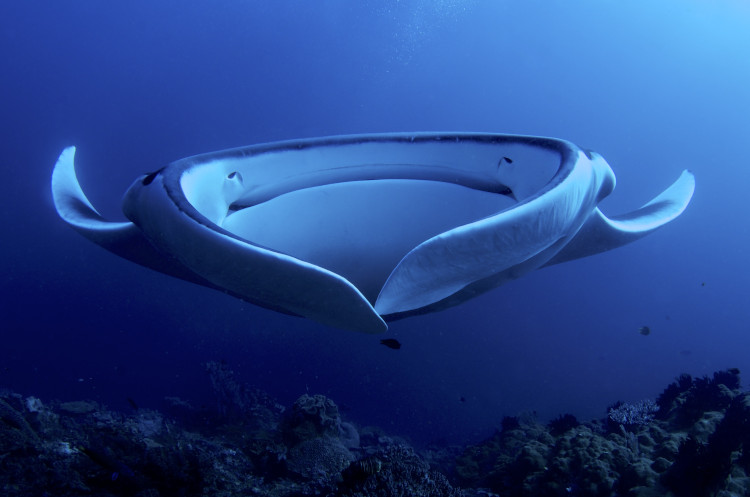
Mantas are pelagic species found in tropical and subtropical waters
of all of the world's major oceans. They also venture into
temperate seas.
The furthest from the equator that mantas have been recorded is
North Carolina in the United States (31°N) and the North Island of
New Zealand (36°S).
Manta rays prefer water temperatures above 20 °C.
M. alfredi is mainly found in tropical areas.
M. birostris lives mostly in the open ocean,
travelling with the currents and migrating to areas where
upwellings of nutrient-rich water increase prey concentrations.
Manta rays are filter feeders as well as macro-predators.
On the surface, they consume large quantities of zooplankton in the
form of shrimp, krill, and planktonic crabs.
At deeper depths, mantas consume small to medium-sized fish.
Swimming behavior in mantas differs across habitats: when
travelling over deep water, they swim at a constant rate in a
straight line, while further inshore, they usually bask or swim
idly around.
Mantas may travel alone or in groups up to 50. They may associate
with other fish species, as well as sea birds and marine mammals.
Mantas sometimes breach or leap out of the water. Individuals in a
group may make aerial jumps in succession.
It glides gracefully through the sea, like an aquatic bird.